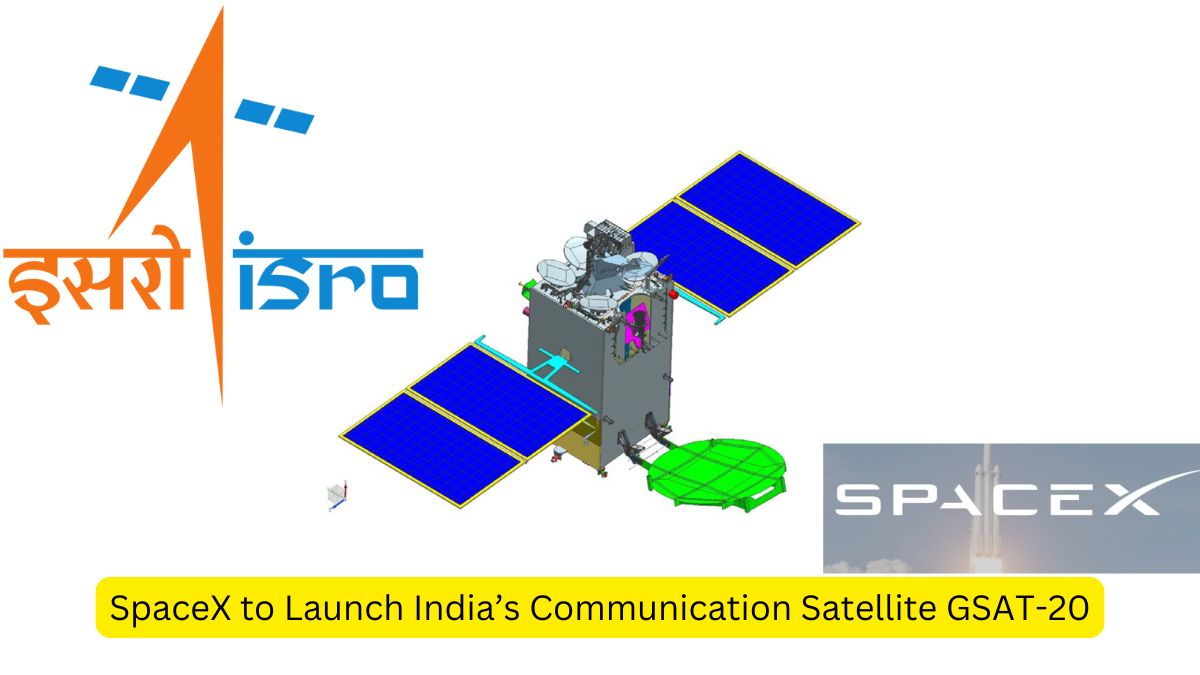India’s heavy communication satellite GSAT-20, weighing 4,700 kg, will be launched from Cape Canaveral, USA, by Elon Musk’s SpaceX on November 19, 2024. The satellite, developed by the Indian Space Research Organisation (ISRO), will provide essential communication services, including internet connectivity to remote areas. This marks a significant milestone in India’s space endeavors, as the satellite is too heavy for India’s own launch vehicle, the LVM-3 “Bahubali.”
Key Points
Launch Date and Location
- Date: November 19, 2024
- Location: Cape Canaveral, USA
- Launch Vehicle: SpaceX Falcon-9 rocket
Satellite Specifications
- Name: GSAT-20 (also called GSAT N-2)
- Weight: 4,700 kg
- Operational Life: Expected to remain operational for 14 years
- Function: Provides vital communication services, including internet for remote regions of India
SpaceX’s Role
- The satellite will be launched using SpaceX’s Falcon-9 rocket.
- Falcon-9’s Capacity: Capable of launching payloads up to 8,300 kg to geostationary transfer orbit.
Reasons for Choosing SpaceX
- GSAT-20 is too heavy for ISRO’s own LVM-3 (Bahubali) rocket.
- Previous reliance on French company Arianespace was no longer viable, as Arianespace lacks operational rockets.
- SpaceX provides a reliable and cost-effective option for launching such heavy satellites.
Significance
- The GSAT-20 satellite will play a key role in strengthening India’s communication infrastructure.
- This marks a shift in India’s satellite launch strategy, with increased reliance on SpaceX due to Arianespace’s unavailability.
- The deal with SpaceX is seen as favorable, offering a cost-effective solution for launching heavy payloads.
| Summary/Static | Details |
| Why in the news? | Elon Musk’s SpaceX to launch India’s heavy communication satellite GSAT-20 |
| Launch Date and Location | Date: November 19, 2024,
Location: Cape Canaveral, USA, Launch Vehicle: SpaceX Falcon-9 rocket |
| Satellite Specifications | Name: GSAT-20 (GSAT N-2),
Weight: 4,700 kg, Operational Life: 14 years, Provides communication services, including internet for remote areas |
| SpaceX’s Role | Falcon-9 rocket to launch GSAT-20, Falcon-9 capacity: 8,300 kg to geostationary transfer orbit |
| Reasons for Choosing SpaceX | GSAT-20 too heavy for ISRO’s LVM-3 (Bahubali), Previous reliance on Arianespace no longer viable, SpaceX provides reliable and cost-effective solution |
| Significance | Strengthens India’s communication infrastructure, marks shift towards increased reliance on SpaceX, favorable and cost-effective deal for heavy payload launches |



 India Plans New Antarctic Station Maitri...
India Plans New Antarctic Station Maitri...
 India Launches Its First 1.0 GHz, 64-bit...
India Launches Its First 1.0 GHz, 64-bit...
 ISRO Projects Seven Launches Including U...
ISRO Projects Seven Launches Including U...







